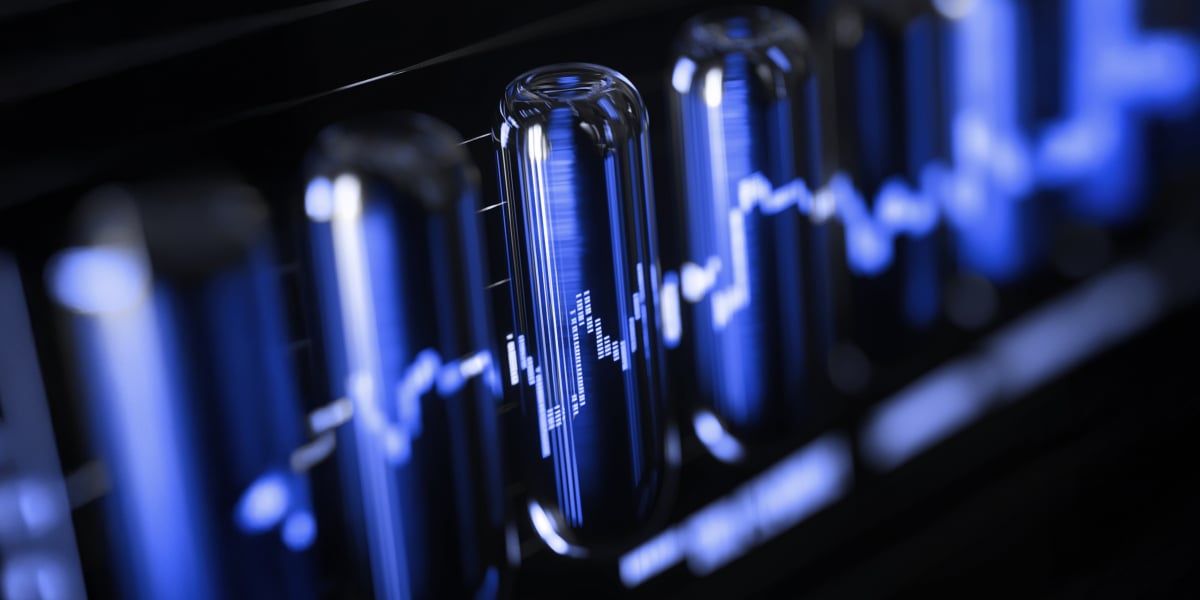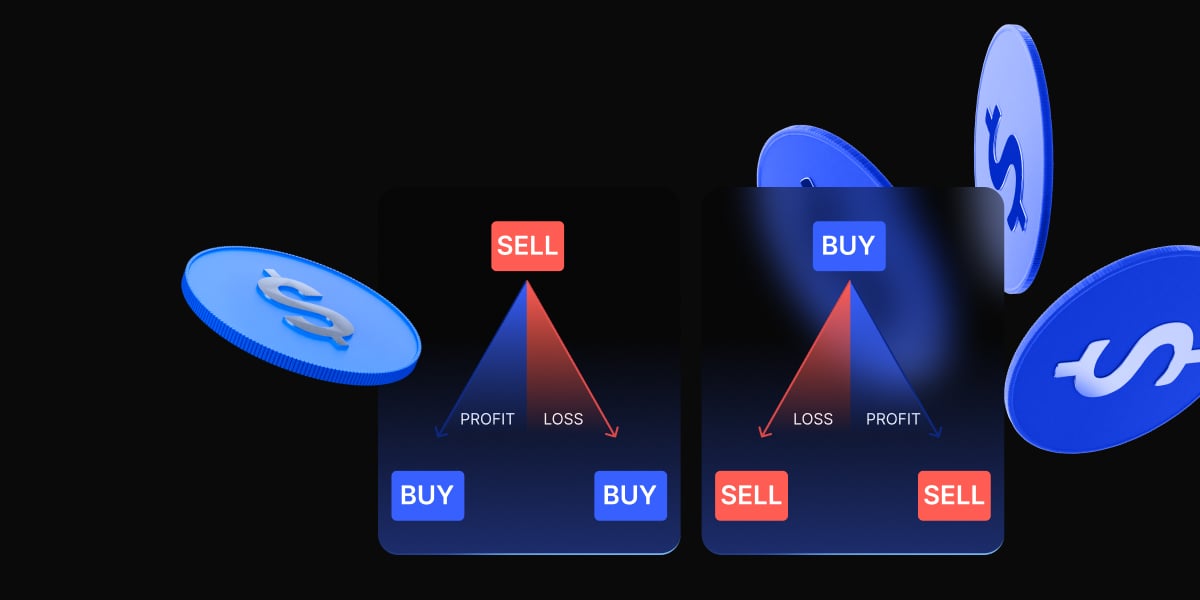We live in a fast-moving world, but in the middle of all that, one thing hasn’t changed. Commodities remain at the heart of global trade. Why? Because no market reacts faster to global headlines. Geopolitical factors, natural resources, supply shocks, weather, inflation. You name it. It all has a huge impact on this market.
In this guide, we’ll break down what makes commodities unique, which of them are considered the best commodities to trade in 2025, and what key factors every trader needs to consider before investing or placing a trade. If you’re ready to learn, let’s get started.
Commodities explained
In the financial world, few asset classes are as essential, or as diverse, as commodities. From the oil fuelling our cars to the wheat in our bread and the gold in our jewellery, commodities form the backbone of everyday life and play a critical role in the global economy.
In simple terms, commodities are natural resources or agricultural products that can be bought, sold, or traded. These are usually grouped into four main categories:
- Energy commodities: such as crude oil and natural gas
- Precious and industrial metals: including gold, silver, copper, and other industrial metals
- Agricultural commodities: like wheat, corn, soybeans, and soft commodities such as coffee, cocoa, and cotton
- Livestock: such as cattle and hogs, often categorized under agricultural sector commodities
The global commodities market includes both the actual buying and selling of physical commodities like oil, gold, or wheat, and the use of financial instruments that track their value.
While some traders still deal in direct trading, where the goods are physically delivered, most prefer to gain indirect exposure using tools like futures contracts, commodity ETFs, exchange traded funds, or exchange traded commodities.
Commodities are traded around the world, and their prices can change quickly based on many different factors. These include weather patterns, geopolitical tensions, crop yields, production costs, or supply disruptions. Because of all these moving parts, commodity prices often show sharp swings.
What makes commodities attractive for traders?
One of the biggest advantages of commodity trading is high liquidity, especially in popular commodities like crude oil, natural gas, and precious metals. These assets are bought and sold in large volumes daily, allowing for fast execution and tight pricing.
Another key benefit is versatility. Commodities can be traded in both rising and falling markets, offering potential for short- and long-term gains.
That’s not all. Here’s why many traders are drawn to commodities:
- Diversification: Commodities often move independently of the stock market, helping balance a diversified portfolio.
- Inflation hedge: Assets like gold and oil often rise in value during high inflation, protecting against weakening currencies.
- Access through various products: Traders can use commodity ETFs, futures contracts, or trading CFDs for flexible market exposure.
- Speculative potential: Volatility driven by geopolitics, weather patterns, or supply disruptions creates frequent trading opportunities.
Perhaps most importantly, commodities are often seen as a hedge against inflation. When energy prices rise or inflation picks up across the global economy, commodity assets often gain value while other sectors struggle. That’s why they’re frequently viewed as a safe haven asset during uncertain times.
Top commodities to trade in 2025
The commodities market in 2025 is anything but predictable. For traders, that means a chance to benefit from rapid price movements, as each single commodity on this list is driven by its own unique market forces. Let’s take a closer look at popular commodities that are especially relevant in 2025.
Which of these assets would make a good addition to an investment portfolio?
Gold
Gold has been one of the world’s most traded precious metals for centuries. Nothing has changed. Inflation is still running hot in many parts of the world, and central banks are quietly adding to their gold reserves. That alone keeps demand steady.
When markets get nervous, the gold price tends to move fast. On top of that, it’s worth noting that in times of uncertainty, it is widely considered one of the world’s most trusted safe haven assets.
Today (3 January 2026) Gold (Gold/USD) is trading at $3311.76. Gold price has changed by -0.7% in the last 24 hours.
Silver
Silver offers a unique mix of qualities that traders look for in assets. It’s both a precious metal and an industrial metal, which means it reacts to economic trends in more ways than gold.
While industrial demand from electronics, solar panels, and EVs continues to push silver higher, it also benefits from safe haven flows when markets turn volatile.
It might not always move in sync with gold, but when silver runs, it often runs fast.
Today (3 January 2026) Silver (Silver/USD) is trading at $32.811. Silver price has changed by 0.9% in the last 24 hours.
Crude oil
West Texas Intermediate (WTI) is one of the most traded oil benchmarks out there. What’s more, it’s as active as ever. Oil prices are still moving on global deals, OPEC+ talks, and supply risks that just won’t go away.
It’s safe to say that this market never stays quiet for long. No surprise it remains a top pick for traders who want constant action.
Today (3 January 2026) Crude oil (US Crude/USD) is trading at $64.48. Crude oil price has changed by 0.7% in the last 24 hours.
Aluminium
Aluminium doesn’t get as much attention as gold or oil, but maybe it should. It’s a key part of modern manufacturing processes, which is why it can be found in everything from cars to cans. Demand is rising right now, thanks to the ongoing shift toward lighter (and more efficient) materials.
Today (3 January 2026) Aluminium (ALUMINIUM/USD) is trading at $2407.3. Aluminium price has changed by 0.9% in the last 24 hours.
Natural gas
Natural gas is a different beast altogether. It’s one of the most volatile commodities this year. Prices can shift dramatically on weather forecasts alone, while European demand and export bans continue to add fuel to the fire.
Natural gas remains a go-to for those seeking fast moving assets, with plenty of short-term trading opportunities.
Today (3 January 2026) Natural Gas (Natural Gas/USD) is trading at $3.179. Copper price has changed by 0.3% in the last 24 hours.
Copper
Now, copper. It’s more than just an industrial metal. It’s a reliable indicator of global economic health. Demand is rising nowadays, mostly on the back of electric vehicle growth, solar buildouts, and infrastructure upgrades worldwide.
Traders and investors continue to watch copper closely, not only because of its utility, but because it often signals the next move in the broader commodity market.
Today (3 January 2026) Copper (COPPER/USD) is trading at $9425.8. Copper price has changed by 0.8% in the last 24 hours.
Wheat
Last but not least is wheat. It continues to be a core player in the agricultural commodities space. Unlike some hard commodities, wheat comes with its own set of challenges. For many traders, it’s not just about the grain itself, but what wheat says about global food supply chains.
Obviously, it’s rarely traded with physical delivery in mind, but it remains a popular choice for those looking to catch strong price moves in this market.
How to trade commodities with PrimeXBT
Where can you actually trade commodities? That’s where PrimeXBT comes in. The platform makes it easy to jump straight into it, whether you’re looking to trade gold, natural gas, crude oil, or even metals like aluminium and copper. There’s a wide range to choose from!
All commodities on PrimeXBT are traded via CFDs (Contracts for Difference). How does it work?
CFDs may be conceived as complex instruments, but in fact, they are quite easy to explain. It allows traders to speculate on commodity prices without owning the asset. You can go long or short and use margin trading. It’s a great way to trade both rising and falling markets, but remember that leverage increases both opportunity and risk.
What else does PrimeXBT has to offer?
- 0.00% trading fees
- Spreads starting at 0.1
- Minimum deposit of only $5
- Full charting and analysis tools built-in
There’s way more to explore once you put it to the test. You can try it out yourself and see how it fits your trading style.
How to start trading commodities on PrimeXBT?
- Sign up for your PrimeXBT account.
- Set up your trading account and complete verification.
- Deposit funds (the minimum is just $5).
- Select the commodity you want to trade and wait for the right entry to get the most out of it!
Key factors to consider when choosing commodities to trade
With so many different commodities to choose from, picking the best commodity to trade at any given time requires more than guesswork. Successful traders weigh a number of strategic and practical factors before entering the market. So the question is… What to focus on?
Market volatility
First of all, it’s worth noting how fast commodity prices can move. Volatility creates opportunity, but also increases the risk. Natural gas and crude oil are known for sharp price movements, often triggered by geopolitical events or sudden weather shifts.
On the flip side, some hard and soft commodities tend to move slower, which can be safer but less exciting for short-term trades.
Liquidity
Then there’s liquidity. Not every commodity trades with the same ease. Highly active markets like those for crude oil, precious metals, and agricultural commodities, tend to have tighter bid-ask spreads and smoother trade execution.
Lower liquidity markets may offer opportunities too, but they also make it harder to get in and out at a good price.
Geopolitical risk & economic indicators
Geopolitics can have a significant impact on commodities as well. For example, oil prices may jump after a Middle East conflict, or natural gas prices can spike due to export bans.
Understanding how global trade policies and instability affect commodity stocks and commodities markets is truly crucial.
What to know before placing your first trade
Preparation is everything. The markets can be unpredictable, but you can always be ready for whatever comes (and for any opportunity that appears).
To do that, you need to know a few key things that will help you dive into the commodities market with a plan and peace of mind. Let’s go through them.
Understanding an asset
It’s important to fully understand what you’re trading. Some markets, like oil or metals, are highly liquid with transparent spot prices. Others, like the agricultural products, can move heavily on seasonal shifts, for example.
Read, try to understand, and never rely only on past performance. In fact, you should do quite the opposite. Always stay aware of what’s currently driving the market you’re trading.
Risk management
In the end, let’s be honest. Investing in commodities without proper risk control can be one of the fastest ways to start losing money rapidly. These markets move fast, and sharp reversals happen all the time.
Beyond understanding the asset you choose to trade, stick to smart position sizing, use stop-loss orders, and never risk more than your plan allows and always make sure your trades are adjusted to your overall financial situation.
The best traders aren’t just chasing big moves. They’re protecting their capital first.
Strategy over emotion
Emotional trading is one of the most common reasons traders struggle. Reacting to price spikes, chasing losses, or entering trades out of fear or hype usually leads to poor decisions.
A good strategy beats gut feeling every time. Stick to a plan, and let data guide the trade, not emotions.
Starting small
It’s tempting to go big on your first few trades, but… don’t. The smart move is to start small, test your strategy, and build experience as you go.
The commodities market can move fast and may easily surprise you, not in a good way necessarily. Better to learn with smaller risk and grow your positions once you’ve seen how different assets behave in real time.
Using the right tools
Having the right tools makes all the difference. That’s why reliable charts, fast execution, and proper order types matter. Just as important is choosing the right trading platform. A platform that makes trading simple, not complicated.
As mentioned earlier, PrimeXBT may be your go-to choice here. It offers exactly the tools and flexibility you need to trade commodities with confidence and provides a relatively low cost way to access these markets.
Summary
Let’s sum things up. Choosing the right commodity isn’t really about luck. It’s about understanding what moves the market and when. Some commodities will give you clean trends, while others will throw wild swings. Either can be profitable if you know what you’re trading and why.
So it doesn’t matter if you want to trade precious metals, crude oil, or soft commodities… Do your homework, watch the price movements, and always respect the risks involved in investing in commodities.
To leave you with something extra, remember that the commodities market rewards those who stay informed and punishes those who don’t. Make sure you’re in the first group.
The content provided here is for informational purposes only. It is not intended as personal investment advice and does not constitute a solicitation or invitation to engage in any financial transactions, investments, or related activities. Past performance is not a reliable indicator of future results.
The financial products offered by the Company are complex and come with a high risk of losing money rapidly due to leverage. These products may not be suitable for all investors. Before engaging, you should consider whether you understand how these leveraged products work and whether you can afford the high risk of losing your money.
The Company does not accept clients from the Restricted Jurisdictions as indicated in our website/ T&C. Some services or products may not be available in your jurisdiction.
The applicable legal entity and its respective products and services depend on the client’s country of residence and the entity with which the client has established a contractual relationship during registration.




